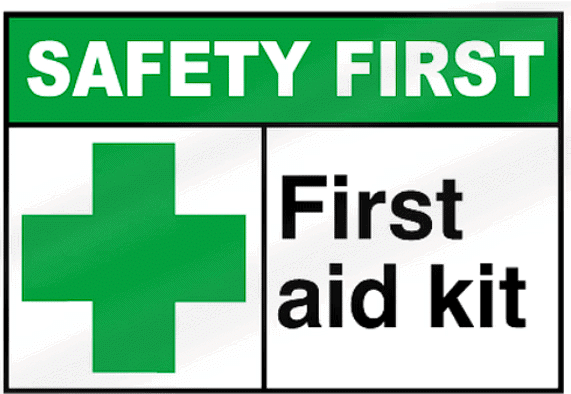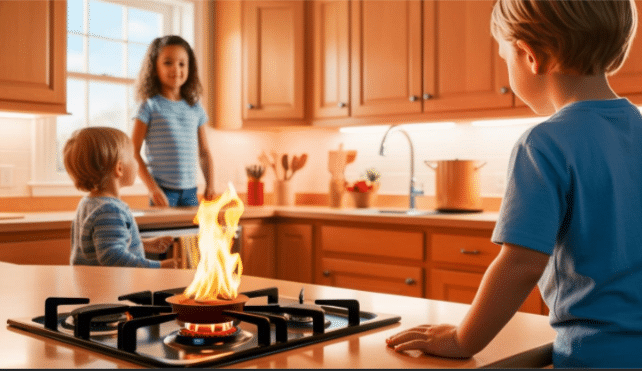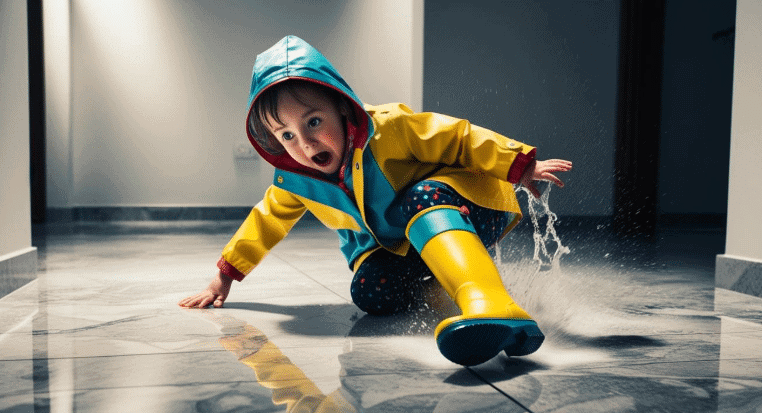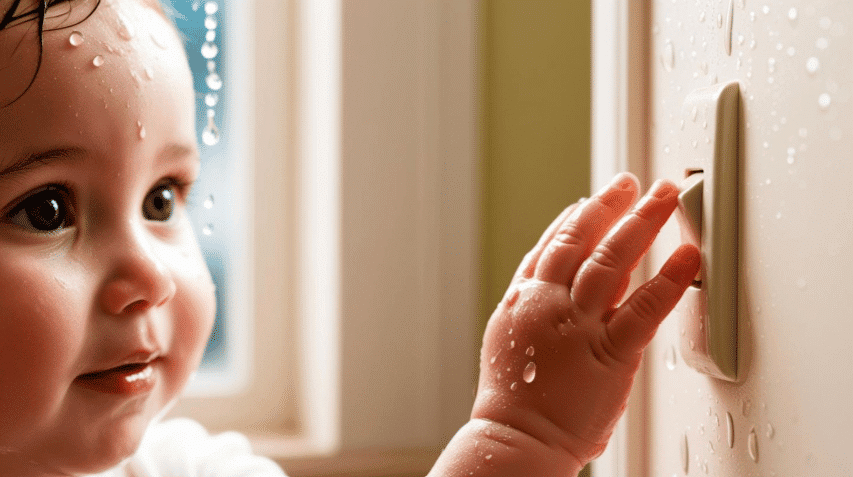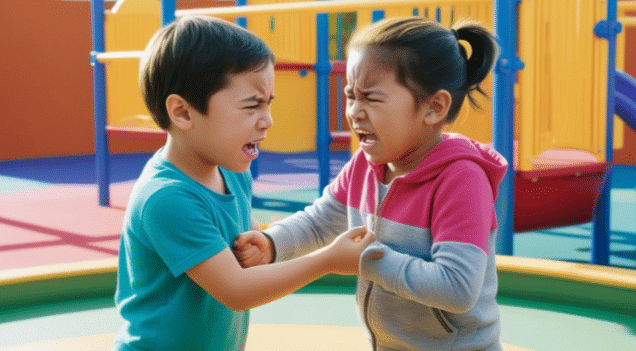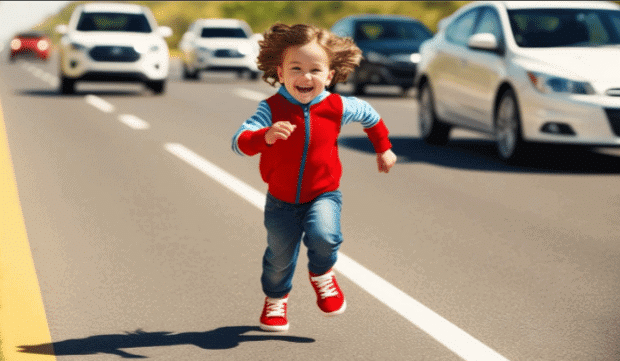Safety and First Aid Class 4 Notes Science
What is Safety and First Aid?
- Safety and first aid are all about keeping people safe and helping them when they get hurt.
- Safety means making sure places are free from danger and teaching people how to avoid getting hurt.
- First aid is the help you give someone right away if they're hurt or sick, like putting a bandage on a cut or helping them breathe if they can't.

- Overall, safety and first aid are important because they help protect us and make sure we know what to do if something bad happens.
- Preventing accidents is achievable by adhering to safety protocols, regardless of location – be it home, school, the poolside, playground, or road.
1. Safety Measures at Home
- Avoid running indoors to prevent potential falls and injuries.
- Refrain from self-medicating; always seek adult or professional advice.
- Exercise caution when encountering strangers; avoid accepting items from them.
- Utilize stools or ladders to access high-placed objects safely.

2. Kitchen Safety
- Refrain from attempting to ignite gas stoves unsupervised.
- In case of gas leakage, ventilate the area before operating electrical appliances or lighting fires.
- Be mindful that synthetic fabrics are highly flammable.

3. Bathroom Safety
- Maintain a dry bathroom floor to prevent slips.
- Keep soap and shampoo off the floor to avoid tripping hazards.

4. Electrical Appliance Safety
- Avoid contact with electric switches and wires with wet hands to prevent electric shocks.
- Immediately cut off the mains in the event of an electric shock.

5. School Safety
- Avoid running on stairs to prevent accidents.
- Abstain from climbing on desks or benches.

6. Playground and Pool Safety
- Abide by game rules and avoid rough play or handling sharp objects.
- Always swim under adult supervision and refrain from diving if lacking proficiency.
- Exercise caution to prevent pushing or pulling others into the pool.

7. Road Safety
- Utilize sidewalks; if unavailable, walk on the right side of the road to face oncoming traffic.
- Cross roads only at designated pedestrian crossings.
- Adhere to traffic signals, recognizing red for stop, yellow for caution, and green for go.
- Avoid playing or running on roads and steer clear of parked vehicles' pathways.

Making Your First Aid Kit
You will need: A rectangular plastic box and cover it with a white sheet of paper. If you don't have it, you can take a clean shoe box and cover it with white paper. 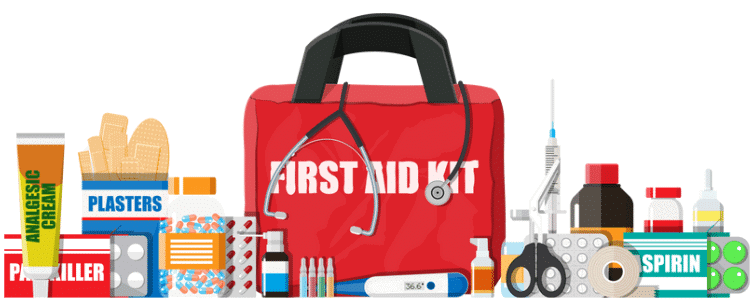
There are some important things you will need to keep in that box like:
- Thermometer
- Hot water bottle
- Ice bag
- A pair of scissors
- Adhesive bandages
- Gauze bandage
- Cotton
- Antiseptic ointments and creams (for aches, cuts and burns)
- Medicines (like Anti-vomiting tablets, antacid tablets tinctures of iodine)
- You should also keep the emergency numbers like those of the local hospital, family doctor, local police station, and fire department on the lid of the box.
Note: Do not forget to draw the Red Cross so it can be easily recognized.
Some general Tips
- Do keep a first aid kit ready and handy for emergencies.
- Fix a list of important phone numbers like the family doctor, and the nearest hospital police station along with it.
- When an emergency occurs, do not panic or lose your cool.
- Never step back to help people in need.
Different types of wounds and accidents require different types of first aid. Let's have a look at them one by one:
1. First Aid for Cuts and Wounds
What will you do if you find someone cut or wound himself/herself?
- First of all, wash your hands before giving first aid. Now, you should soak the cotton in an antiseptic solution and clean the cut/wound with it.
- If the cut/wound is small, you can simply cover it with a Band-Aid.
- If the cut/wound is bigger, apply an antiseptic cream (ointment) over it. Then, place a cotton pad on it and wrap up the injured area with a bandage. Do take care that the bandage is neither too tight nor too loose.
- In case of bleeding, press the wound with a sterilized, cotton pad. When the bleeding stops, apply antiseptic cream (ointment), then cover it with a cotton pad and bandage.
- In case of heavy bleeding, tie a handkerchief above the wound, to stop the bleeding.
- In heavy bleeding, do not give the patient any food. Give only a little water or a piece of ice to suck if the patient feels thirsty.
- Also, take the patient to the nearby hospital for further medical aid and consult a doctor for the same.
2. First Aid For Burns
(i) Minor burns and home remedies
- In case of minor burns, pour plenty of cold water immediately over it. This prevents the heat from going deeper and forming blisters. Further, apply an anti-burn ointment.
(ii) There are several home remedies to apply on burn like:
- Baking soda mixed with water.
- A paste of turmeric and milk.
- You can also apply coconut oil mixed with neel (INDIGO) (used to wash white clothes) to prevent the formation of burn scars.
(ii) Major Burn Injuries

- If the clothes of a person catch fire, cover the patient with a blanket and roll them over to stop the fire.
- Make the person lie in the open and do not crowd around.
- Give them plenty of water to drink.
- Remove the burnt clothes not sticking to the body. Immediately, apply anti-burn ointment all over the burns.
- After that, cover the patient with a clean cloth and rush the patient to the nearest hospital.
3. First Aid for Bleeding Nose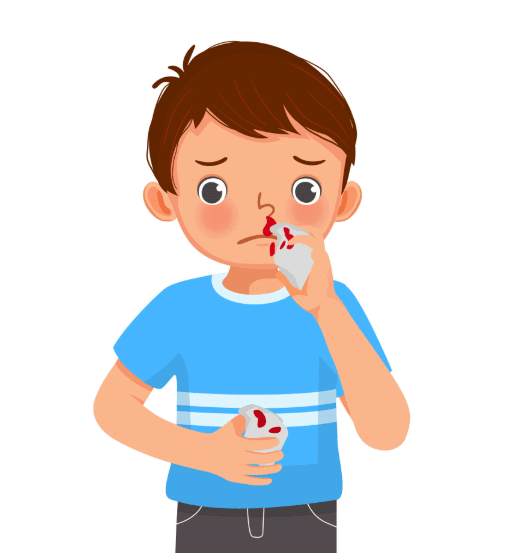
You may have sometimes observed nose bleeding suddenly in extreme summers or injury.
How can you help if you find someone suffering from this?
- For this, you should press the bleeding side of the nose hard at the points shown in the picture and hold the head of the patient back.
- Make the patient breathe through the mouth and put a wet towel on the patient's head to stop bleeding.
- Always consult a doctor if bleeding persists.
4. First Aid for Insect Bite
- In case of an insect bite, like wasp or honey bee, the first step is to remove the sting.
- Apply lime water or ammonia on the bite.
- Follow with a paste of baking soda and cream.
- Put some ice on the bite in order to reduce swelling.
5. First Aid For Dog Bite

- If somebody is bitten by dog, clean the wound thoroughly first with soapy water and then with an antiseptic.
- If this is not followed, the patient may suffer from rabies.
- After that, cover the wound with a bandage and take the patient to the doctor immediately.
6. First Aid for Sprain
- Sprain refers to the great pain and swelling one may experience while twisting of hands or legs.
- In such case, you should cool the injured part with ice cubes. This will reduce both pain and swelling.
- Wrap an elastic crepe bandage around the affected part. This will reduce movement and pain.
- Give the patient some pain relieving tablets.
- Another option is to give the patient a glass of warm milk with a little turmeric mixed in it for faster healing.
- In severe cases, rush to the doctor.
7. First Aid for Fracture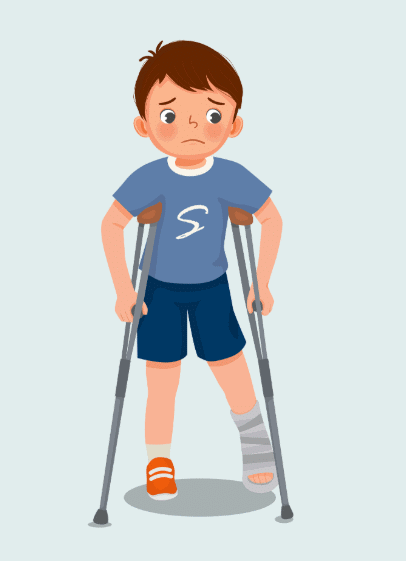
- The breaking or cracking of a bone in our body is called a fracture.
- It can be identified by severe pain and swelling, and the patient is unable to move that part of the body.
- Do not move the injured part of the patient. In case of a broken arm, use a sling to support the injured part.
- In case of a broken leg, make the patient lie down, and use a piece of cardboard or magazine as a splint, to prevent further dislocation of the bone.
- In such cases, the patient requires immediate medical attention.
- An orthopedic doctor looks after bone injuries.
Fire Extinguisher

- The fire extinguisher works by cutting the supply of oxygen.
- Oxygen is needed for anything to burn.
- So, if the supply of oxygen is cut off, the fire gets extinguished.
- For this, these cylinders contain carbon dioxide in the form of liquid.
- These cylinders are commonly known as fire extinguishers.
Quick Revision: First Aid Guide
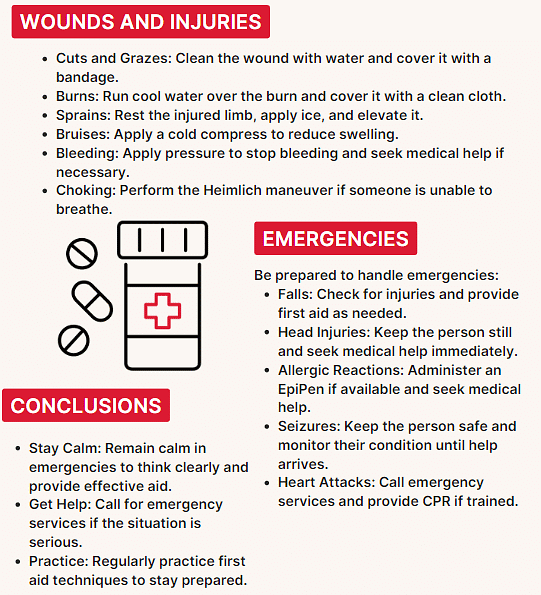
|
50 videos|90 docs|28 tests
|
FAQs on Safety and First Aid Class 4 Notes Science
| 1. What are some important safety measures to take at home? |  |
| 2. How can I make my kitchen safer for cooking? |  |
| 3. What safety tips should I follow in the bathroom? |  |
| 4. How can I ensure electrical appliance safety in my home? |  |
| 5. What are some essential first aid tips that everyone should know? |  |


